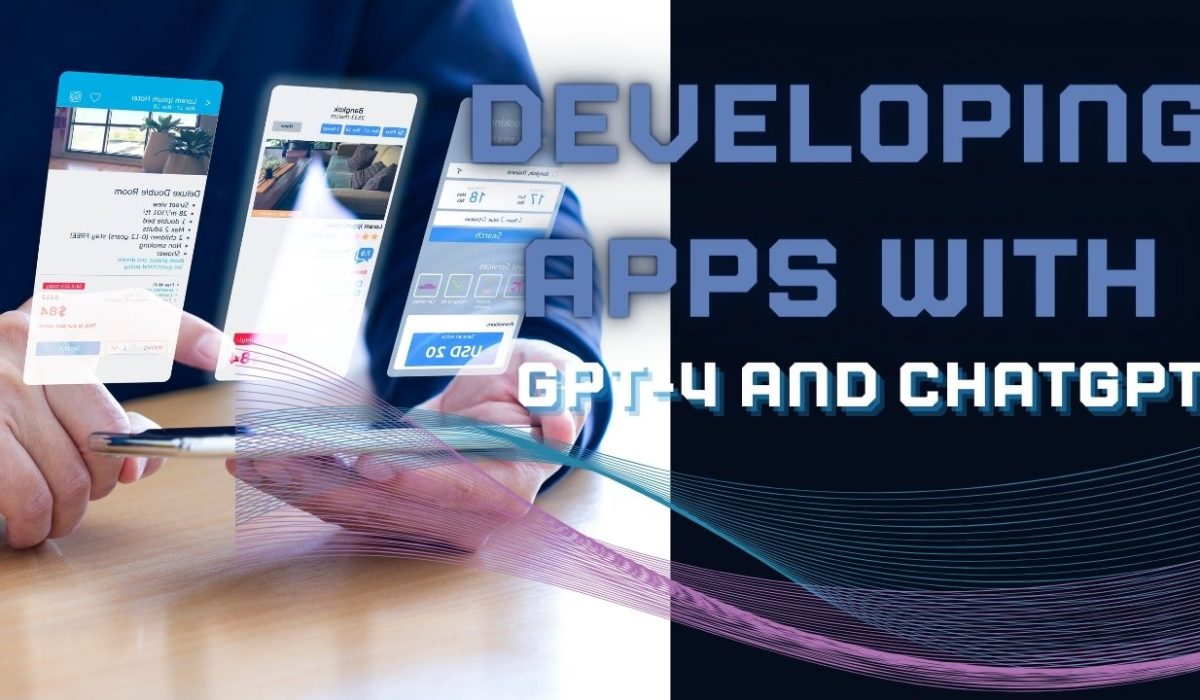Table of Contents
ToggleIntroduction
Applications built with the help of large language models like GPT-4 and ChatGPT have transformed a lot in the tech world. These models have strong NLP, enabling them to improve user engagement and automate deeper level tasks. In this exhaustive guide, I narrate a detailed step-by-step on developing apps with GPT-4 and ChatGPT that would prove handy for integrating models into Python-based applications to perform several tasks like generating text, responding to questions, or summarizing content.
GPT-4 & ChatGPT Explained
What are GPT-4 and ChatGPT?
OpenAI has created a state-of-the-art language model known as GPT-4 and ChatGPT. It comes with better accuracy and understanding of context, and improved text generation – the perfect upgrades for GPT-4 after all. ChatGPT is a conversational-tasks fine-tuned model, perfect for building chatbots and other interactive applications.
Key Features
- Text-to-Image: Both models understand and generate human-like text, enabling them to be powerful resources for natural language understanding in various applications.
- Text Generation – These models can generate natural sounding, contextually relevant completions to text and are useful for generating long sentences of content(text) automatically.
- Question Answering: The bots can provide precise answers to questions based on the context provided which is highly useful for customer support and information retrieval type of applications.
Introduction to GPT-4 + ChatGPT by OpenAI
Setting Up Your Environment
Setting up the dev environment to get started building apps with GPT-4 and ChatGPT, we need to have our development setup. Please also make sure you have installed Python and were able to use OpenAI API.
1. Install Required Libraries:
bash
Copy code
pip install openai
2. API Key: Signup on the OpenAI platform and obtain your API key. You will use this key to prove that you are who your requests say they are going to the OpenAI servers.
Basic Example: Hello World
Here’s a simple “Hello World” example to get you started with GPT-4 and ChatGPT:
Python
Copy code
import openai
openai.api_key = ‘your-api-key’
response = openai.Completion.create(
engine=”gpt-4″,
prompt=”Hello, world!”,
max_tokens=5
)
print(response.choices[0].text.strip())
Advancing with Applications
Text Generation
One of the most powerful capabilities GPT-4 and ChatGPT have is text generation. These are in a model that you can utilize with your creating process to turn out innovative and data-driven content irrelevant of category.
Python
Copy code
response = openai.Completion.create(
engine=”gpt-4″,
prompt=”Write a story about a young programmer who discovers an AI that can write code.”,
max_tokens=200
)
print(response.choices[0].text.strip())
Question Answering
Implementing a question-answering system can significantly enhance customer support applications. Here’s how you can use GPT-4 for this purpose:
Python
Copy code
response = openai.Completion.create(
engine=”gpt-4″,
prompt=”What is the capital of France?”,
max_tokens=10
)
print(response.choices[0].text.strip())
Content Summarization
Content summarization can be useful for generating concise summaries of lengthy documents, improving readability and information retrieval.
Python
Copy code
response = openai.Completion.create(
engine=”gpt-4″,
prompt=”Summarize the following article: [Insert article text here]”,
max_tokens=100
)
print(response.choices[0].text.strip())
Advanced Topics
Prompt Engineering
Getting the Most From GPT-4 and ChatGPT with Right Prompts On the broader level, consider content-specific context and clarity of prompts to guide model answers.
Fine-Tuning Models
Fine-tuning – You will be able to fine tune the model for your tasks or specific industry. This is done by training the model further on different datasets to make it perform better in specific areas.
Integrating with Other APIs
GPT-4 along with ChatGPT can be used within other APIs to create end-to-end applications. For example, using a data retrieval API with these models could be improve tremendously.
Best Practices
Security and Privacy
Reasons for Geer-Roback study for using GPT-4 in applications with ChatGPT Hygiene and privacy angle etching reasons from the paper Proper treatment of sensitive data and compliance with the regulations regarding personal information.
Cost Management
You will also get billed if you are using GPT-4 and ChatGPT frequently in high volume. Monitor your API usage and optimize your apps to make effective use of tokens.
Handling Limitations
Consider the shortcomings in GPT-4 and ChatGPT, as these can generate false or biased data Use the information to review and validate your model output as necessary.
Example Projects
Building a News Generator
Build a news generator that generates News articles based on topics/keywords passed to it Especially for content creators and news agencies.
Summarizing YouTube Videos
Create an app that quickly summarizes YouTube videos by extracting and summarizing the transcript to give users a gist of what it contains.
Creating a Personal Assistant
Create a task living assistant with scheduling, reminders and questions for one that will boost productivity as well users simpleness.
Conclusion
The possibilities for improving user interfaces and automating tasks through applications built with GPT-4 and ChatGPT are endless. You can use these models to create breakthrough solutions by learning the building blocks of deep neural networks, setting up your environment and tackling some advanced topics. Do not forget to observe security, cost management, and best practices for handling limitations for your applications to be successful.



